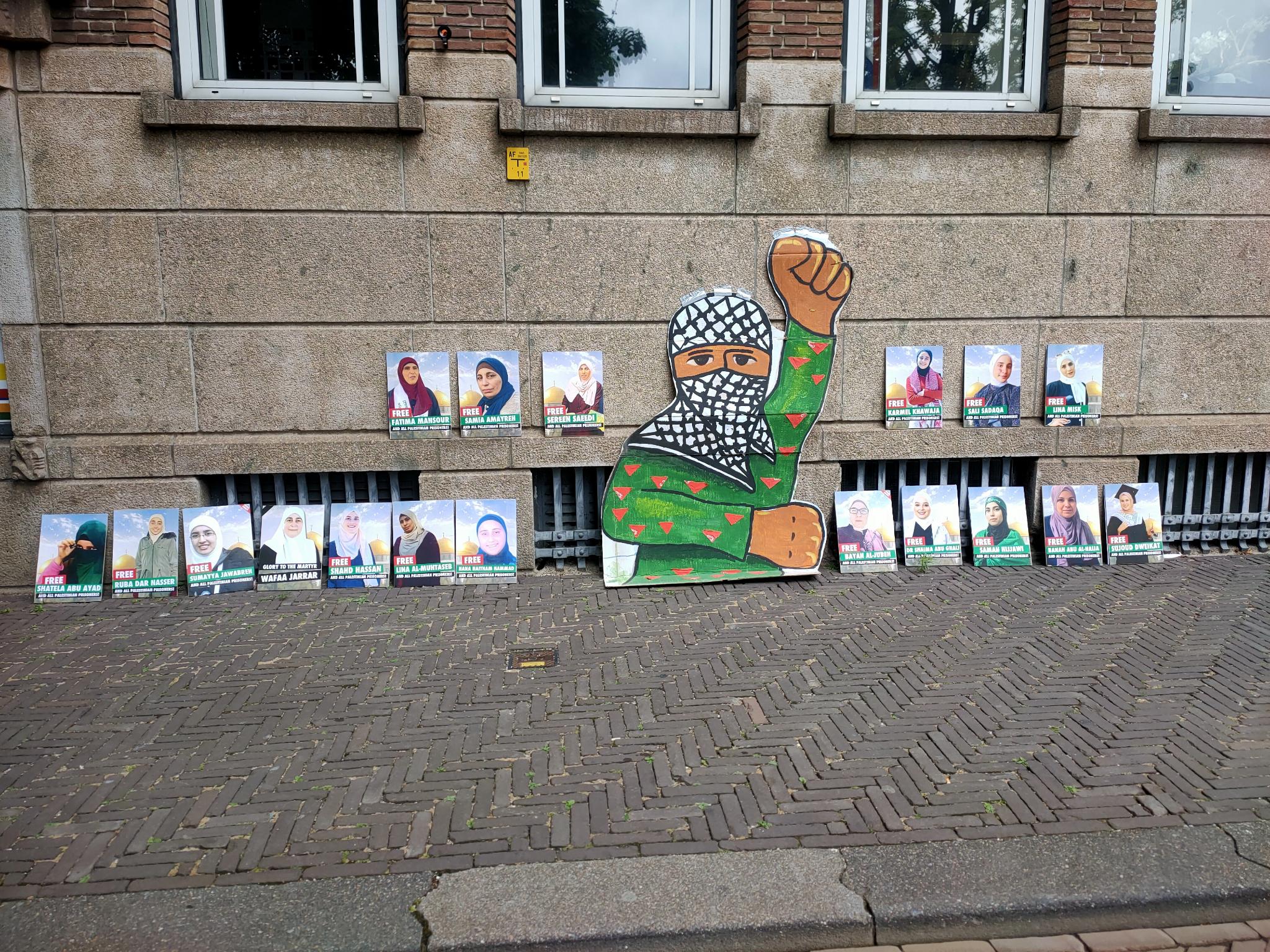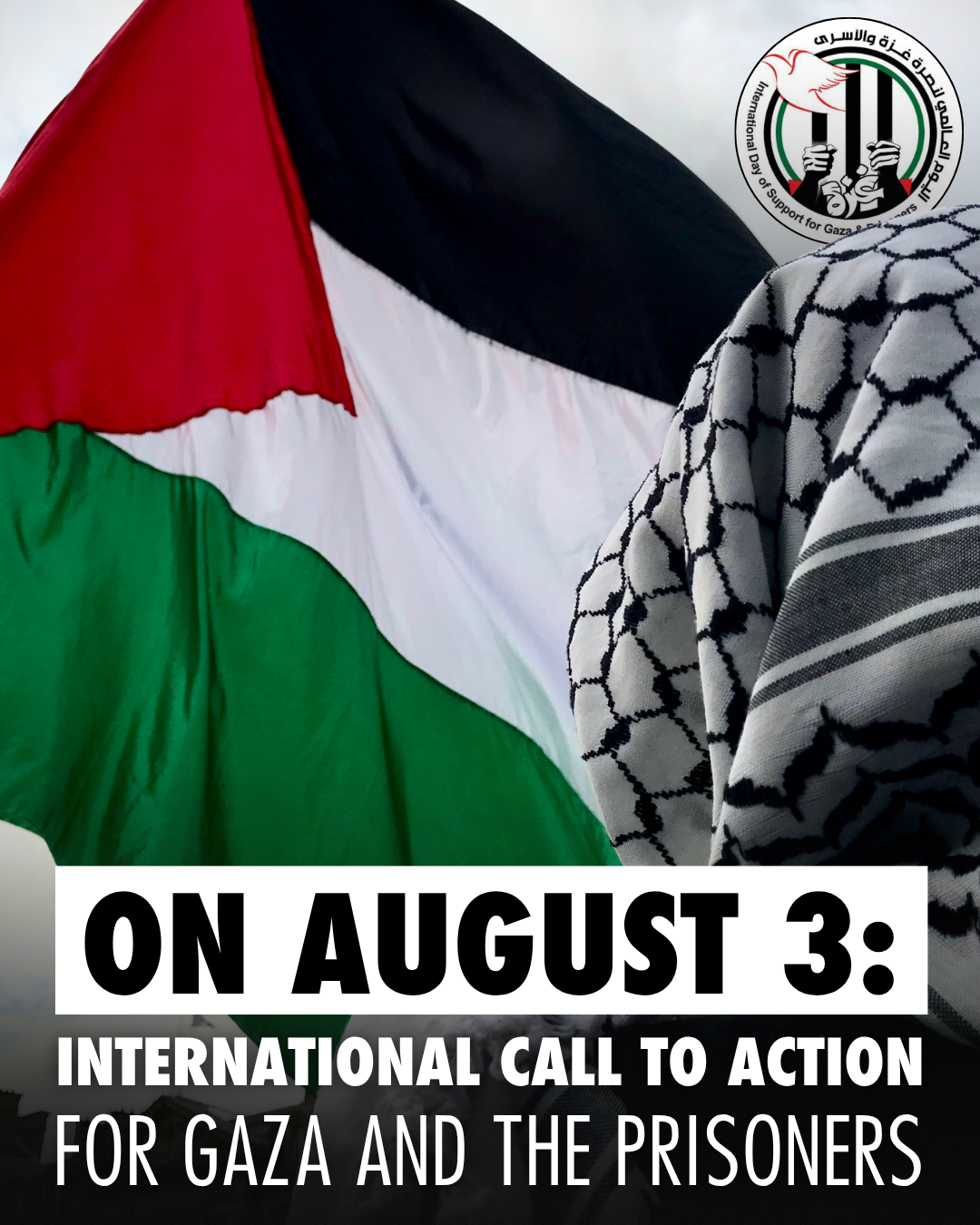
“We call for active and massive participation on this national and global day in defense of our prisoners and our people in the Gaza Strip, to expose the brutal crimes of the occupation against them, and to support their rights and just cause….We look forward to making the 3 of August a pivotal day in all parts of Palestine, in the refugee camps and the diaspora, in our Arab and Islamic world, & among all the free people of the world, to support our people in Gaza and our free prisoners in the occupation’s prisons.” – Ismail Haniyeh, 29 July 2024
Samidoun Palestinian Prisoner Solidarity Network joins in the collective call for action on 3 August and throughout the first week of August, for days of rage and action in solidarity with Gaza, the prisoners, and the Palestinian people and their liberation, from the river to the sea. As the ongoing Zionist-imperialist genocide enters its 666th day of escalation — after over 77 years of a genocidal project being implanted in the region at the behest of imperialist powers — it is more urgent than ever for people around the world, especially in the heart of the imperial core, to organize, escalate, and answer the calls of the workers and students of Gaza, and of the heroic Palestinian resistance, for action to break the siege, liberate the prisoners and end the genocide.
The ongoing escalated genocide in Gaza is being carried out not only through bunker-buster bombs and artillery shells, but also through the massive use of the weapon of starvation against the Palestinian people. While the Zionist regime, with the full participation and complicity of the imperialist powers, has besieged Gaza for over 18 years, since 2 March 2025 it has almost entirely cut off entry of basic supplies and food, blocking access to the United Nations and internationally recognized food distribution projects like UNRWA and the World Food Program, initiating the US-Zionist death traps of the so-called “Gaza Humanitarian Foundation” (actually a CIA-private military contractor joint project), and funding and arming collaborator gangs to attack and steal aid trucks whenever they do enter, particularly to UN facilities.
As a result of the Zionist siege, Gaza is currently facing a level 5 famine, entirely created by the Zionist military machine and its imperialist backers in the United States, Britain, France, Germany, Canada, and fellow European Union powers. Over 1,000 Palestinians have been massacred at GHF “aid sites” — a mechanism to concentrate, surveil, abduct and ethnically cleanse Palestinians — while over 160 Palestinians, including 92 children, have been martyred due to starvation and malnutrition. Euro-Med Human Rights Monitor reported that over 1,200 elder Palestinians have been martyred in the past 2 months due to the effects of starvation and lack of health care, due to the all-out assault and destruction of the Palestinian health system by the Zionist war machine. While U.S. “mediator” Steve Witkoff, who appeared on stage alongside lead Trump donor and far-right Zionist advocate Miriam Adelson to pledge his support for the genocidal entity, appears at the GHF “aid” site in Rafah for a photo opportunity, Palestinian journalist Anas al-Sharif revealed that occupation forces were using suppressors (silencers) to shoot aid seekers in order to reduce the visibility of the crime amid the media attention.
Far from an “honest broker,” Witkoff and the United States — which claims to be a mediator while directing and arming the genocide — have repeatedly used ceasefire negotiations to instead slander the Palestinian resistance while presenting a false image to the public of the world, which is increasingly outraged by the widely shared images and testimonies of genocide and engineered starvation. While repeatedly claiming that an agreement is “near,” these parties have instead repeatedly rejected any kind of dignified ceasefire and instead plotted more war crimes and crimes against humanity, including ongoing aggression targeting Lebanon, Syria, Yemen and Iran, not to mention the massive outbreak of settler violence and military attacks throughout the West Bank of occupied Palestine.
At the same time, over 10,800 Palestinian prisoners — in addition to Lebanese and Syrian prisoners — are living the experience of engineered starvation and slow assassination inside the occupation prisons. Just days ago, Palestinian prisoners’ associations announced the martyrdom of Sayed Jamal Abu Rajab, the 75th identified Palestinian prisoner martyred inside the occupation prisons since 7 October 2023. The Palestinian prisoners are being subjected to extreme torture and abuse alongside malnutrition and denial of medical care, while the leadership of the prisoners’ movement have been held in complete isolation — and repeatedly beaten — for 22 months. In the prison camps like Sde Teiman and Anatot, Palestinians — especially from Gaza — are routinely subjected to sexual assault, physical violence and mass starvation. Palestinian prisoners are women and men, children and elders, from all political backgrounds — targeted as part of the ongoing assault on Palestinian existence and resistance.
Throughout the genocide, the heroic resistance, particularly the armed resistance, continue to confront the occupation and impose a cost upon the genocidaires with unparalleled bravery and commitment to the struggle. In every area of Gaza where the occupation claims that the resistance has been eliminated or defeated, a new operation emerges to prove that the opposite is true. In fact, the occupation has utterly failed to achieve its stated military objectives of freeing its prisoners or eradicating the resistance. It is instead seeking to rely on political and diplomatic power to achieve these goals, as the resistance in Gaza has blocked them on every occasion. Let us be clear — demands for a “demilitarized Palestinian ‘state'” or the “disarmament of the resistance,” whether in Palestine or Lebanon, are demands to continue the genocide without repercussions and achieve what they have failed to do on the battlefield. In fact, it is the weapons of the Resistance that are currently standing as the foremost shield of humanity in the face of a vicious death machine wielded by Zionism and imperialism.
August 3 and the first week of August take on an even more significant meaning when we recall that the call to action for August 3 in 2024 was the final public statement and call to action of the martyred Palestinian leader, Ismail Haniyeh, Abu al-Abed, the leader of Hamas and a national leader of the Palestinian people, who was assassinated by the occupation in Tehran, Iran, on 31 July, only two days later, alongside his companion, Waseem Abu Shaban. This assassination was, like the genocide itself, a coordinated attack with the participation of the U.S.; on the same day, the Zionists assassinated Lebanese resistance leader Fouad Shukr of Hezbollah, while the U.S. bombed Iraq, targeting four leaders of the Iraqi resistance.
He was renowned for his high level of principle and commitment to Palestinian liberation and national unity, and for his rejection of the unjust and unacceptable conditions placed upon the Palestinian people — indeed, the attempt to bargain Palestinian lives for basic rights and dignity. As he declared, “The fortresses will not fall, the strongholds will not be breached, they will not snatch our positions from us, and we will not recognize ‘Israel.'” Throughout generations of struggle, the Palestinian people have made clear that the martyrdom of their leaders will not hold back their struggle; as we mark 3 August one year later, we must also make that clear internationally, and make Haniyeh’s last call to the public one that resonates through the years, for action and solidarity.
Those principles are perhaps more urgent than ever, with the Palestinian cause facing multiple forms of attack: of course, the genocide and starvation regime imposed by the US-European-Zionist aggression on Gaza and throughout Palestine, the taking of nearly 100 martyrs daily, the horrific war crimes against the population. However, the proclamations of Britain, France, Canada and other directly complicit imperialist nations (as well as of Saudi Arabia and complicit Arab reactionary regimes) about “recognition of a Palestinian ‘state'” (without actual control over land, borders and trade; without sovereignty or self-determination; ‘demilitarized’ and serving as a security arm of the Zionist regime; without the right to return of Palestinian refugees; and with the elimination of the resistance) are not about recognizing Palestinian rights but instead about a new project to liquidate those rights. In fact, these statements come as a new report reveals ongoing and widespread Canadian arms trade with “Israel” and as Britain declares Palestine Action a “terrorist” organization for confronting Zionist arms factories.
If any of these states actually seek to support Palestinian rights, the first steps that they can and must take are to impose a two-way, full arms embargo on the Zionist regime; expel ‘Israeli’ ambassadors and close their own embassies; end the criminalization of Palestinian resistance and Palestine solidarity organizations as ‘terrorists’; immediately send trucks and observers, and accompany those trucks to demand the immediate entry of aid to Gaza through the Rafah crossing with no interference or role for the Zionist genocidaires — not to mention the moral obligation to actively support the Palestinian resistance. They are instead aiming to pacify the outrage among their populations about the ongoing genocide, cover up their own complicity and protect the future of the Zionist project rather than recognizing the fundamental rights of the Palestinian people — without conditions — to full self-determination and sovereignty, not to mention return and liberation, on their entire national soil.
This moment has also highlighted the complicity of reactionary Arab regimes that have engaged in normalization with the Zionist project, from Camp David to Wadi Araba to the “Abraham Accords,” in the continuing genocide. From Egypt refusing to open the Rafah crossing to enter goods and international journalists due to the dictates of the U.S. and the Zionist entity, to Jordan criminalizing support for the resistance and even protest while shooting down drones from Yemen and Iran, to the United Arab Emirates creating a “land bridge” to evade the Yemeni blockade of the port of “Eilat” (Umm al-Rashrash), these reactionary regimes are now facing real pressure about their active complicity in the siege, starvation and genocide of Gaza at the behest of the imperialist powers. Meanwhile, in Syria, despite the government’s repeated assurances of its interest in “peace” and normalization, the occupation continues to invade, take over territory and abduct Syrians.
In contrast, at the same time, every day, in Lebanon, resisters and people of the South are targeted for assassinations in rampant ceasefire violations while the U.S. demands the disarmament of the Resistance, while Yemen continues its massive popular mobilization for Palestine alongside and fully integrated with the actions of its armed forces to actively intervene to bring an end to the genocide and cut off its supply lines in an example that should serve as a challenge to all.
This 3 August — and every day from now — must be a time for action, but also a time for escalation. 22 months, 666 days of genocide, amid rampant engineered starvation, the deliberate promotion of disease, and the mass murder of Palestinian children, adults and elders, men and women, in schools, mosques, churches, refugee camps and residential buildings.
We join the call of the Masar Badil, the Palestinian Alternative Revolutionary Path Movement:
Let the first week of August become Days of Rage everywhere—especially in North America and Europe.
We call upon the masses of our Palestinian people, the allies and supporters of the resistance, and all anti-colonial forces around the world to raise their voices loud and clear, take to the streets, besiege Zionist embassies, and turn every public square and city into a point of direct confrontation, until the siege is broken and the aggression is ended.
We must stand up for the martyrs, and for the imprisoned martyrs that the occupation continues to jail after death, and witness for them. Stand up for the wounded, for the health care workers fighting to save lives under the bombs. Stand up for the heroic resistance fighting every day for a free Palestine. Stand up for the prisoners, confronting the occupier daily behind bars, holding fast to freedom.
- Confront the arms factories that trade with the occupation or are owned directly by occupation companies — like Elbit Systems — with blockades and direct action. Shut down the economy of genocide.
- Besiege the embassies of the occupation and its complicit imperialist partners. Shut them down and make it impossible for them to carry out their genocidal business.
- Shut down streets, government buildings and institutions of the imperial core. The genocide is an emergency. Every day, Palestinians are being massacred and it is clear that the imperialist states will not exert pressure for the genocide to end unless their own interests are on the line directly.
- Continue the escalations at the embassies of complicit Arab reactionary regimes. These regimes must be concerned about their own futures in order to create counter-pressure to the Zionists and imperialists.
Wherever you are, organize, escalate and act. Ramp up our organizing and our mobilization, be louder, more visible, and create a greater obstruction for the business of the war machine. It is clear that the genocide will not end so long as its perpetrators enjoy impunity; if we cannot rely or wait for the courts, we must impose popular accountability through action.
The Palestinian resistance is today on the front lines defending Gaza, Palestine, the Arab nation, the Islamic world, and all of humanity. Our actions must live up to the example they set every day, to end the human-made famine, end the starvation, end the genocide — and fight for a free Palestine, from the river to the sea.
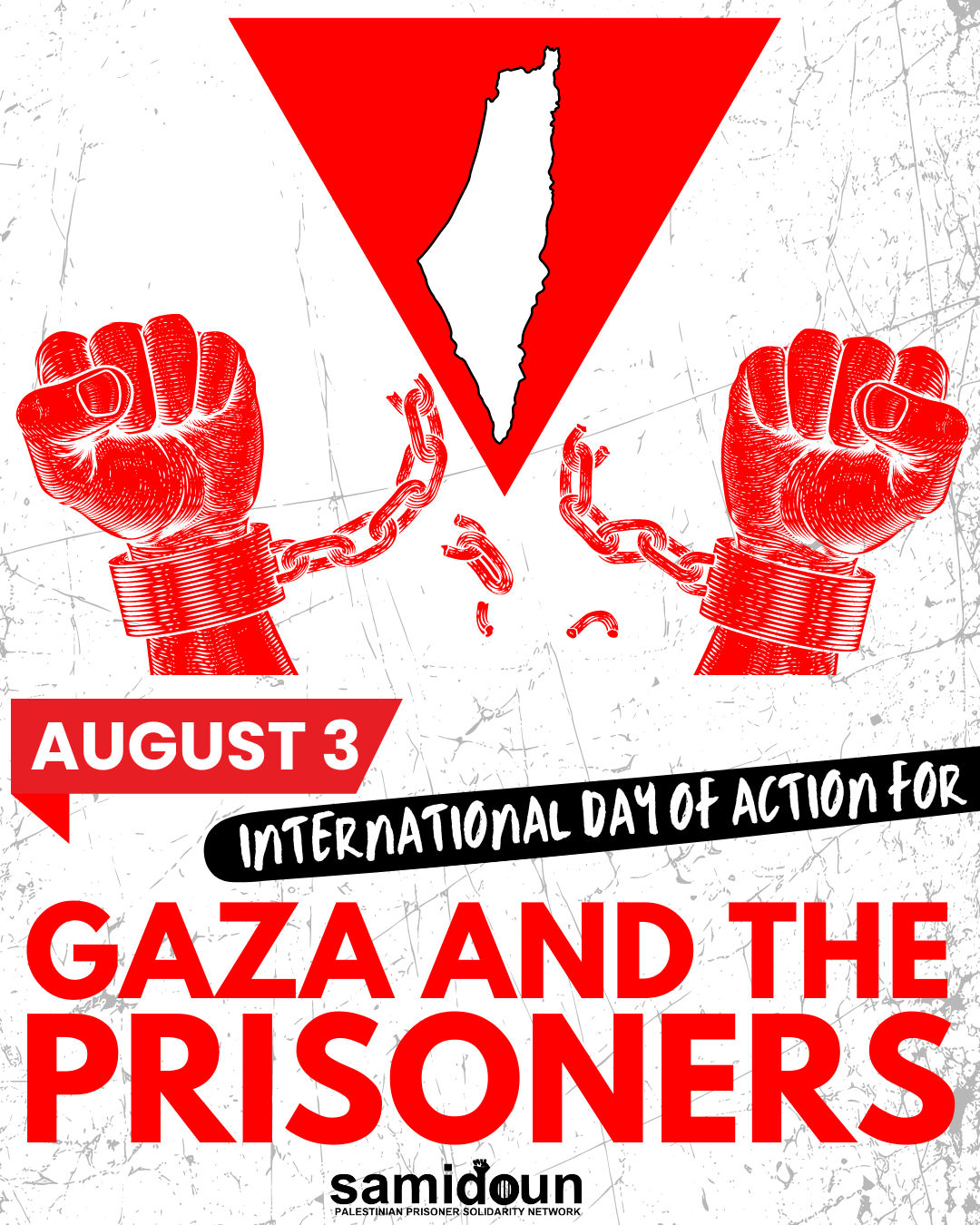
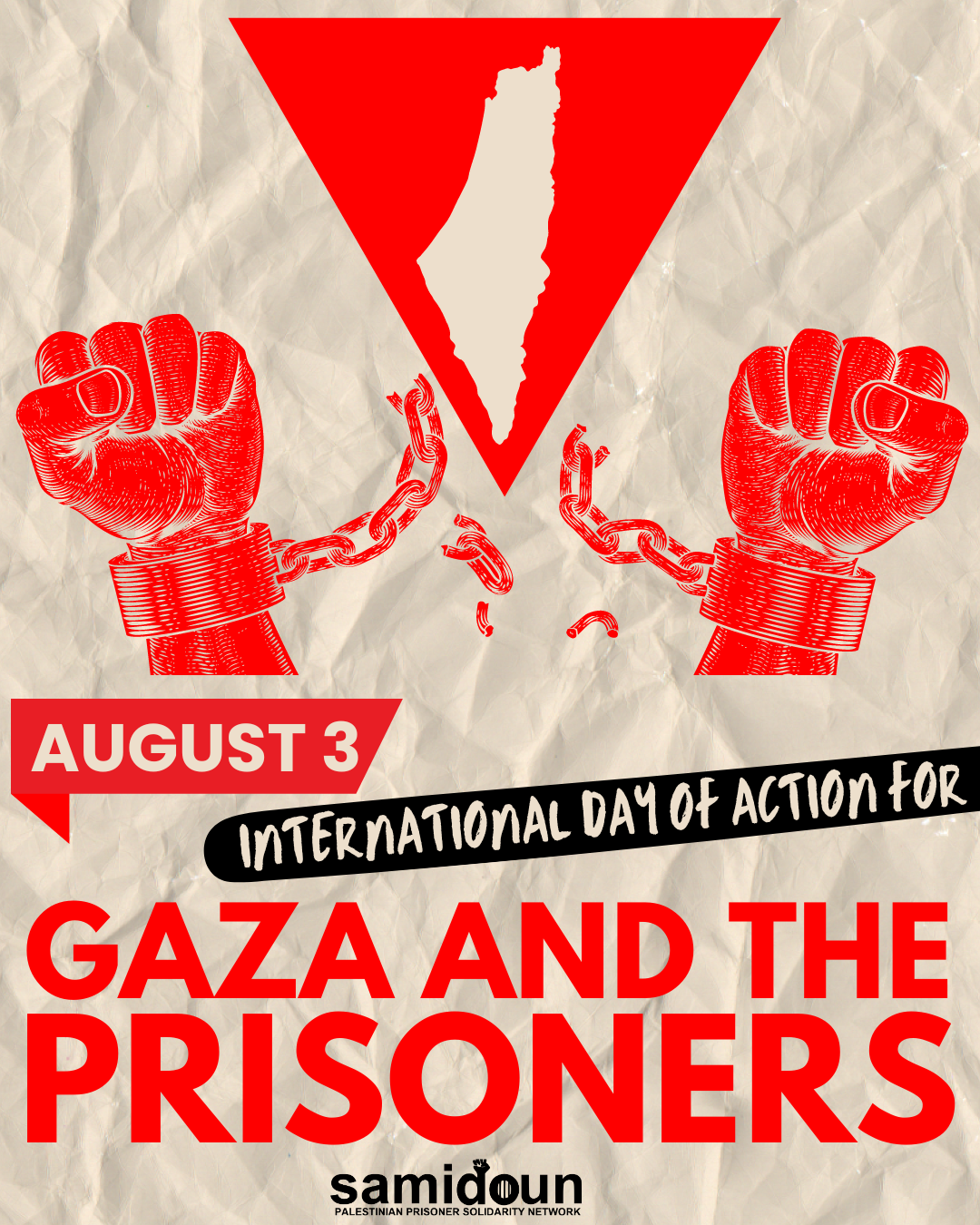
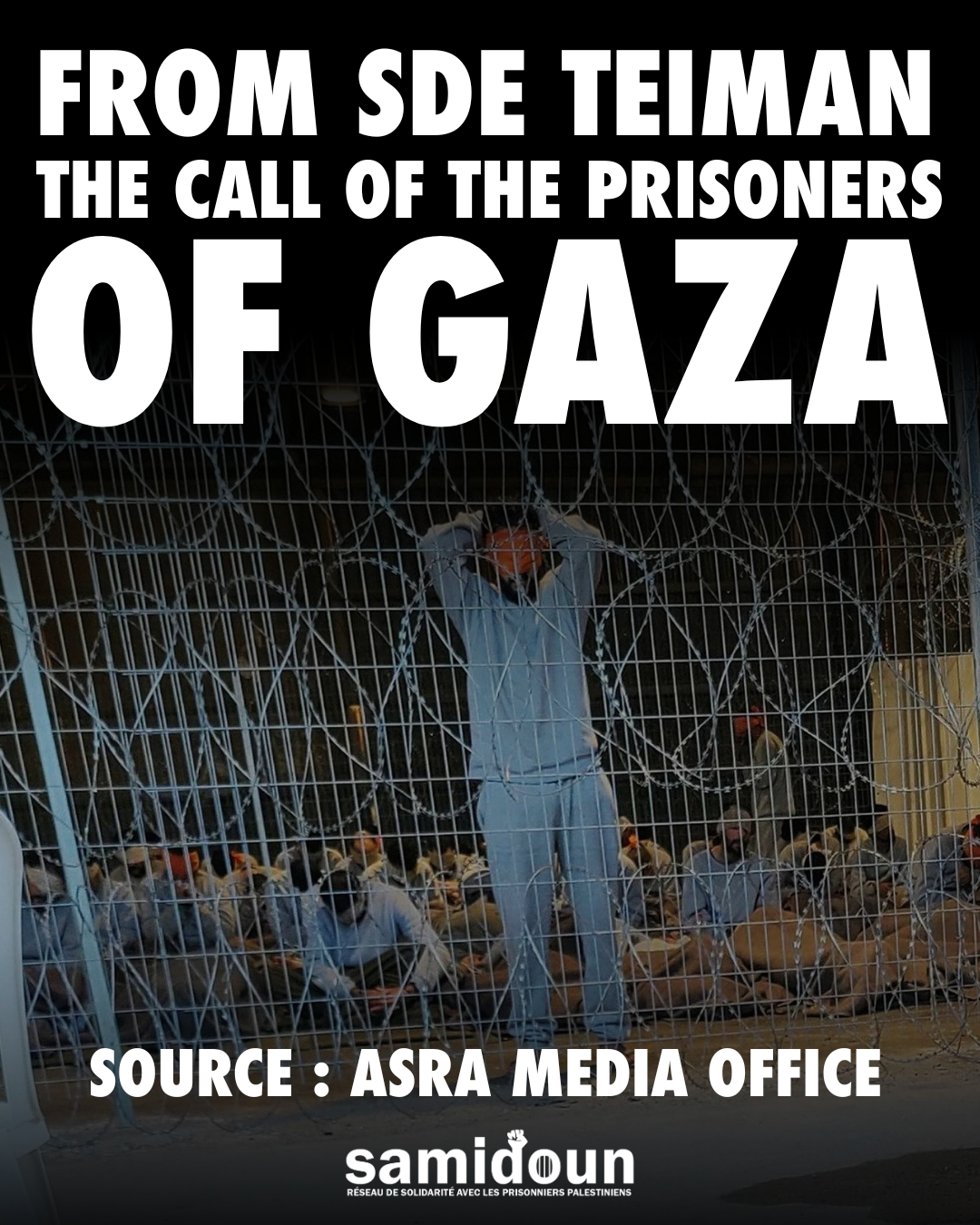

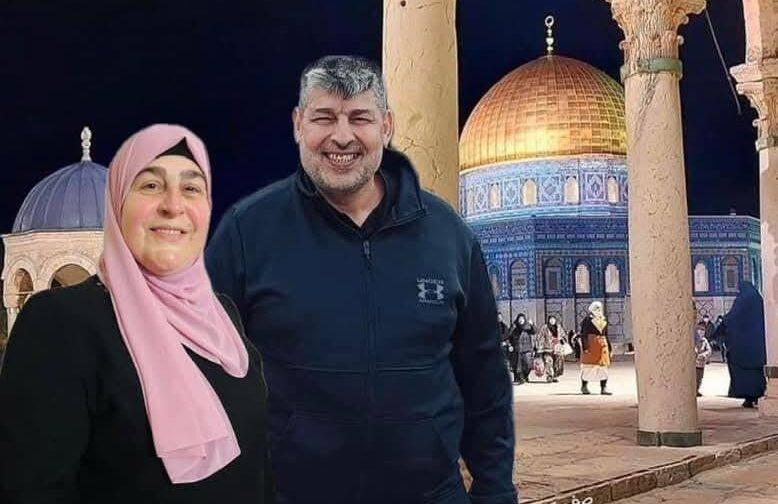
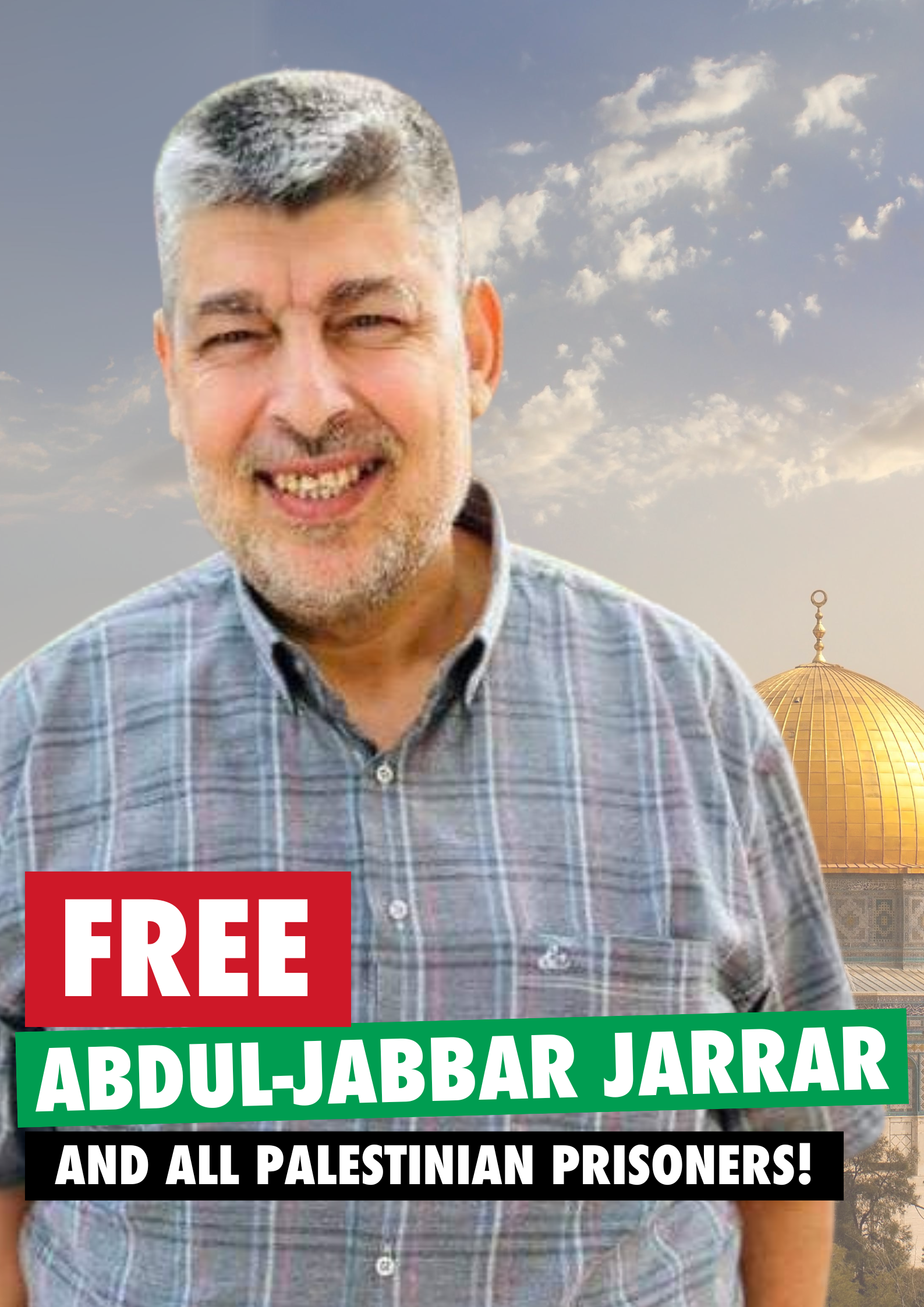 Throughout her injuries, her arrest, her release and her martyrdom, Abdul-Jabbar was separated from Wafa’ and prevented from bidding her farewell. Now, his administrative detention was renewed precisely on this painful anniversary by the occupation. In May, Abdul-Jabbar Jarrar was diagnosed with scabies, the skin disease which has been deliberately allowed to run rampant in Zionist prisons, with Palestinian detainees denied proper medical care and access to basic sanitary supplies.
Throughout her injuries, her arrest, her release and her martyrdom, Abdul-Jabbar was separated from Wafa’ and prevented from bidding her farewell. Now, his administrative detention was renewed precisely on this painful anniversary by the occupation. In May, Abdul-Jabbar Jarrar was diagnosed with scabies, the skin disease which has been deliberately allowed to run rampant in Zionist prisons, with Palestinian detainees denied proper medical care and access to basic sanitary supplies.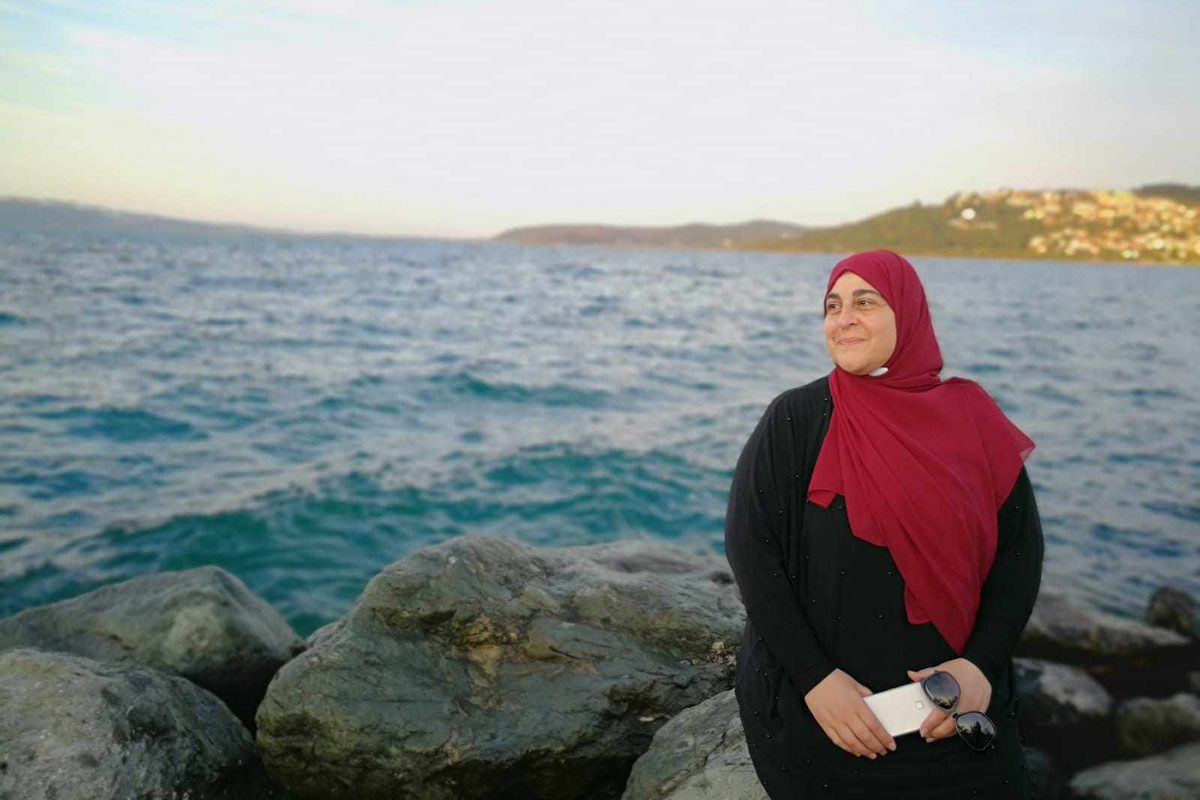
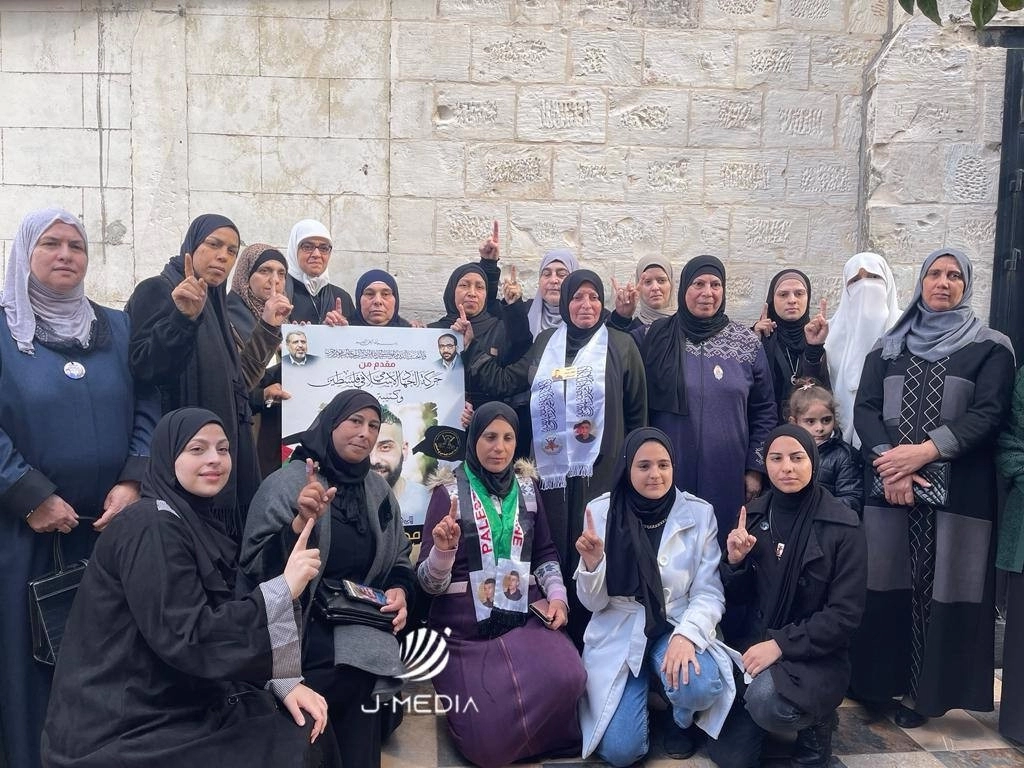
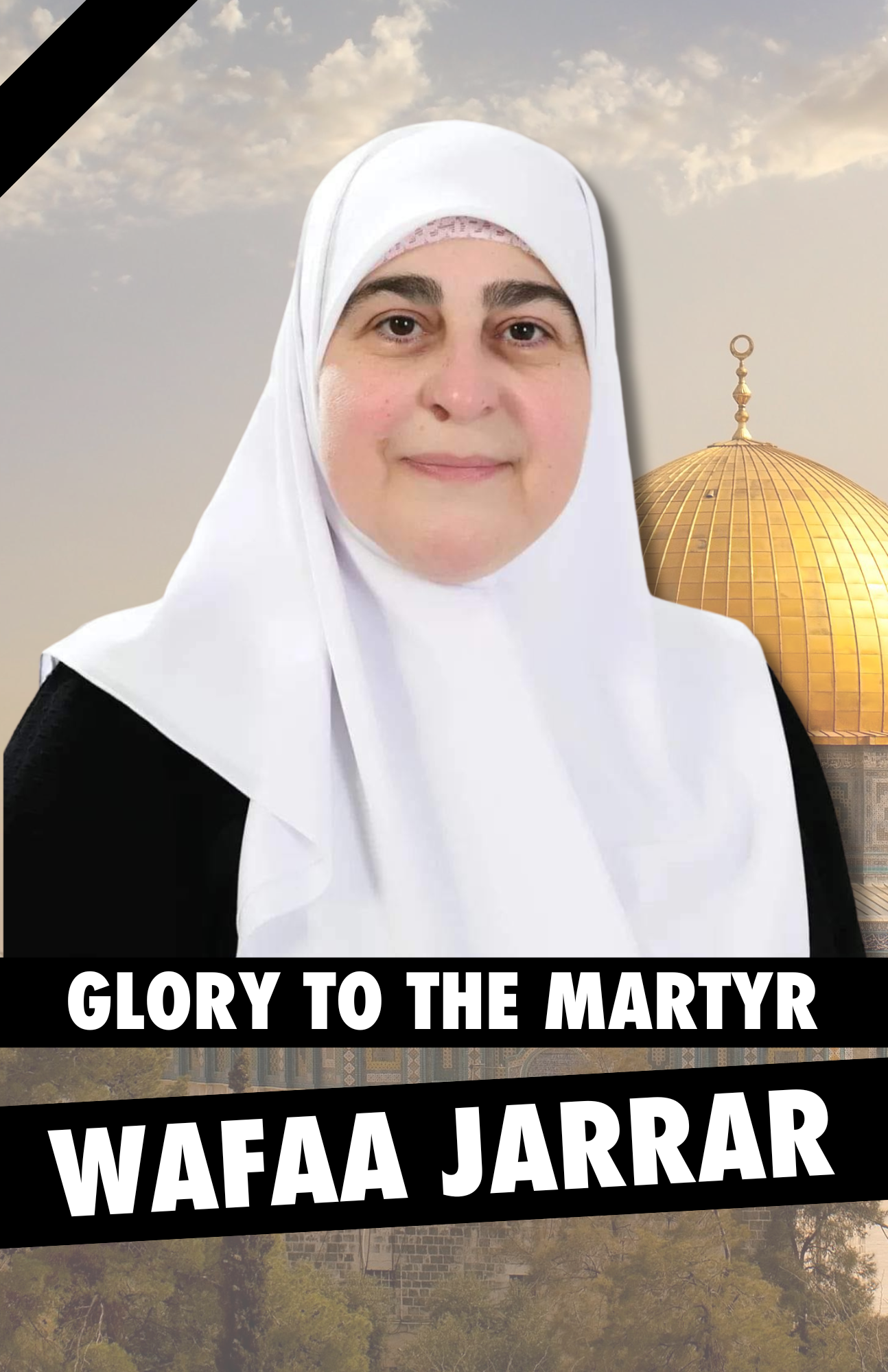
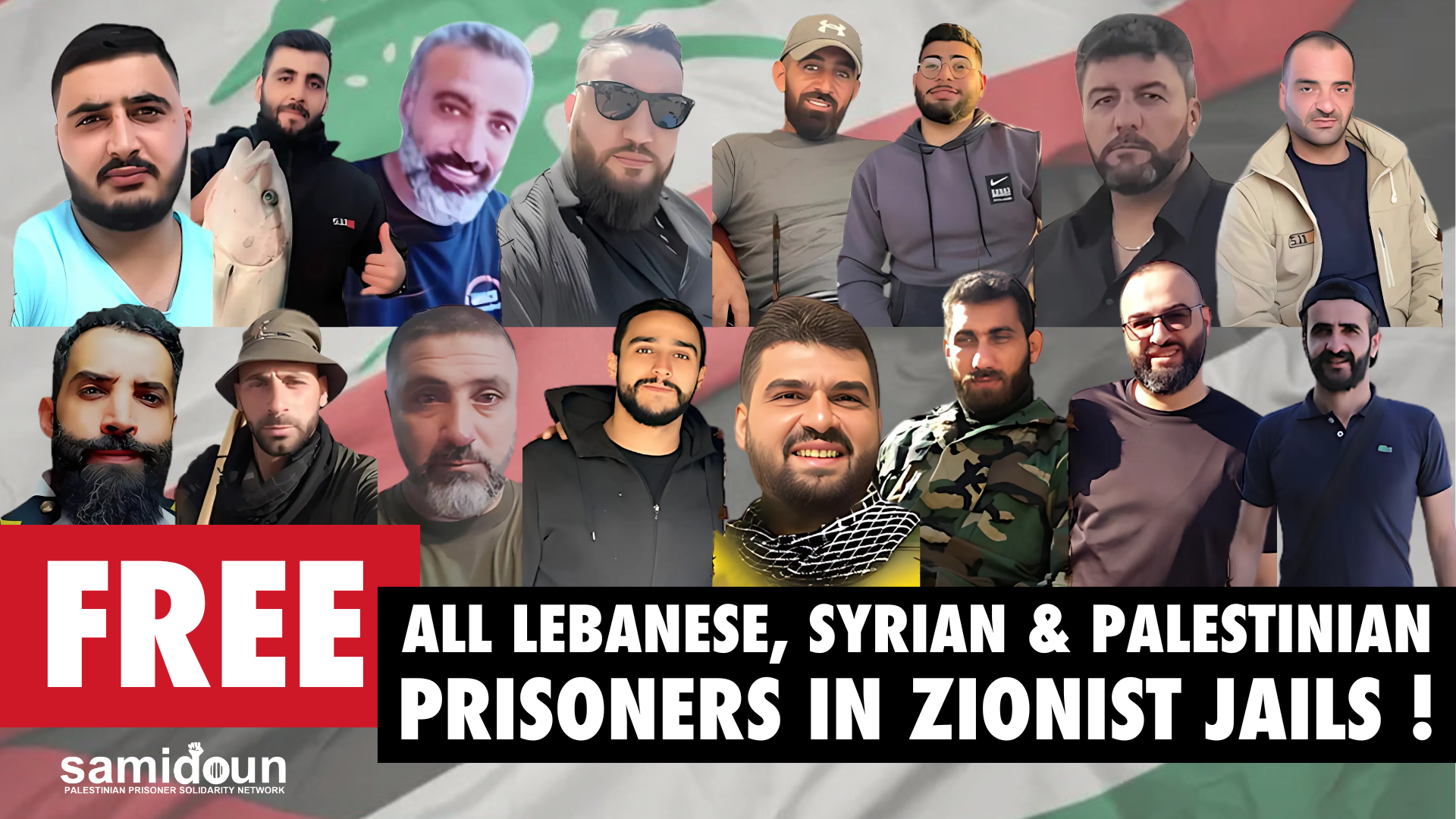






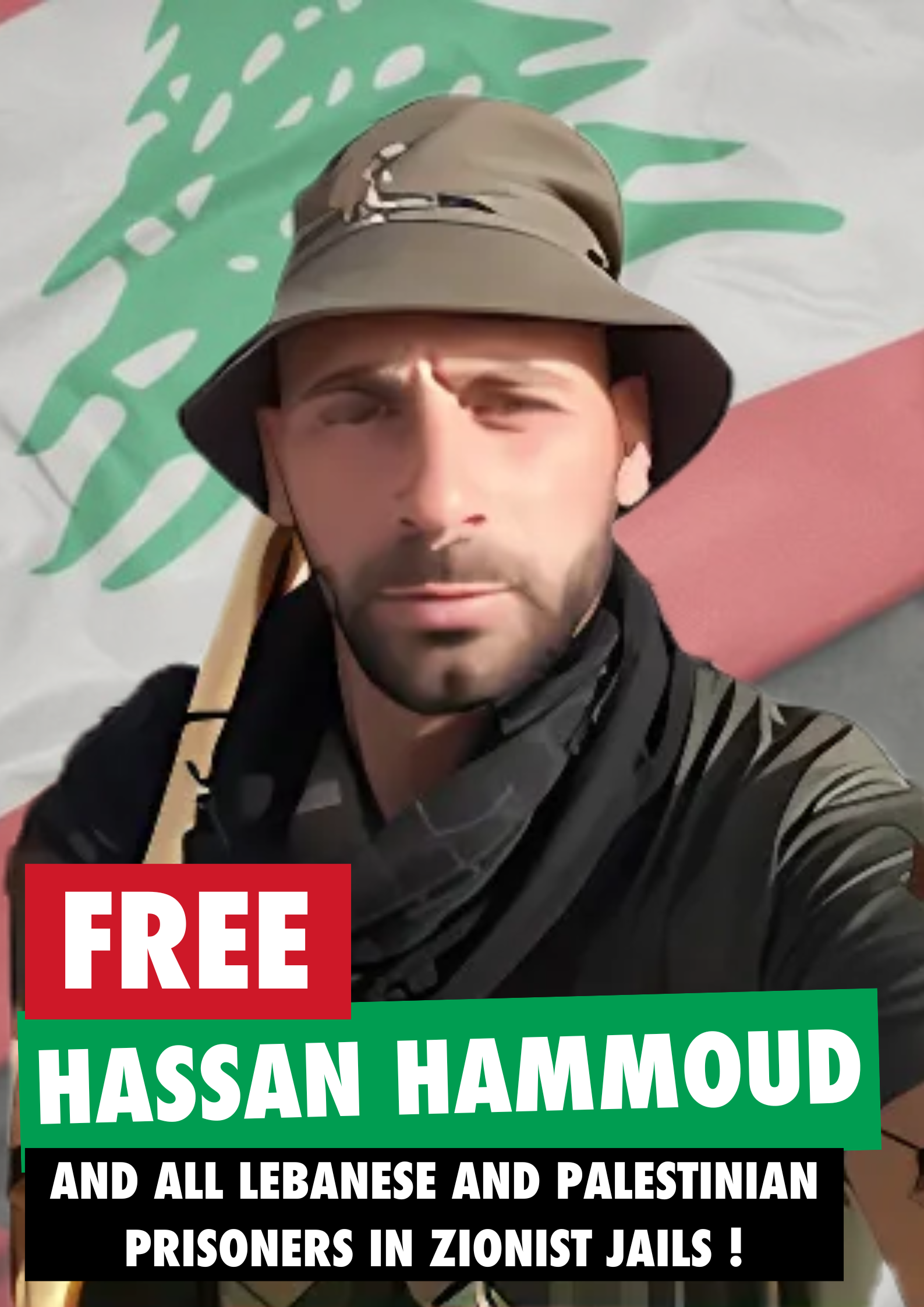






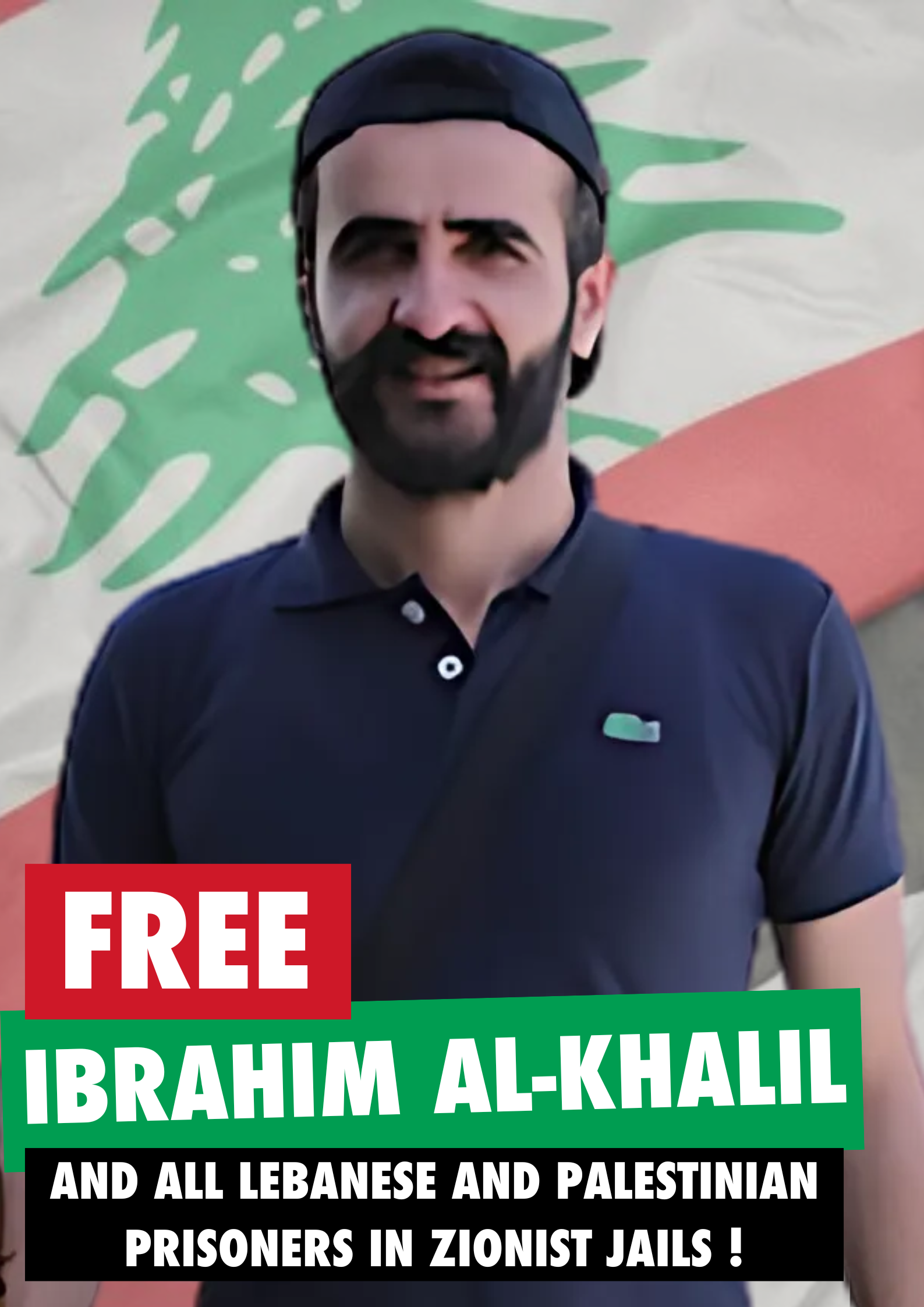





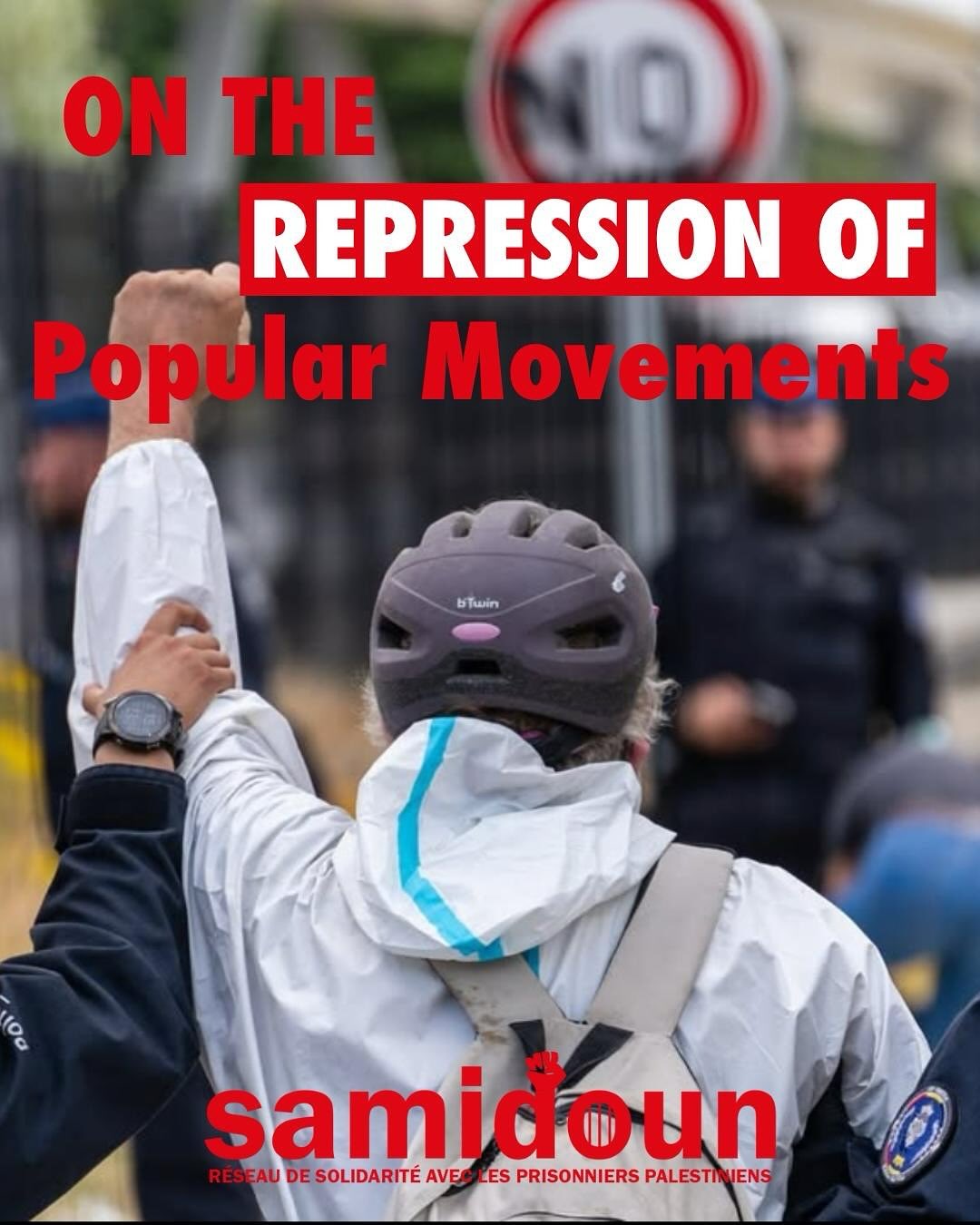
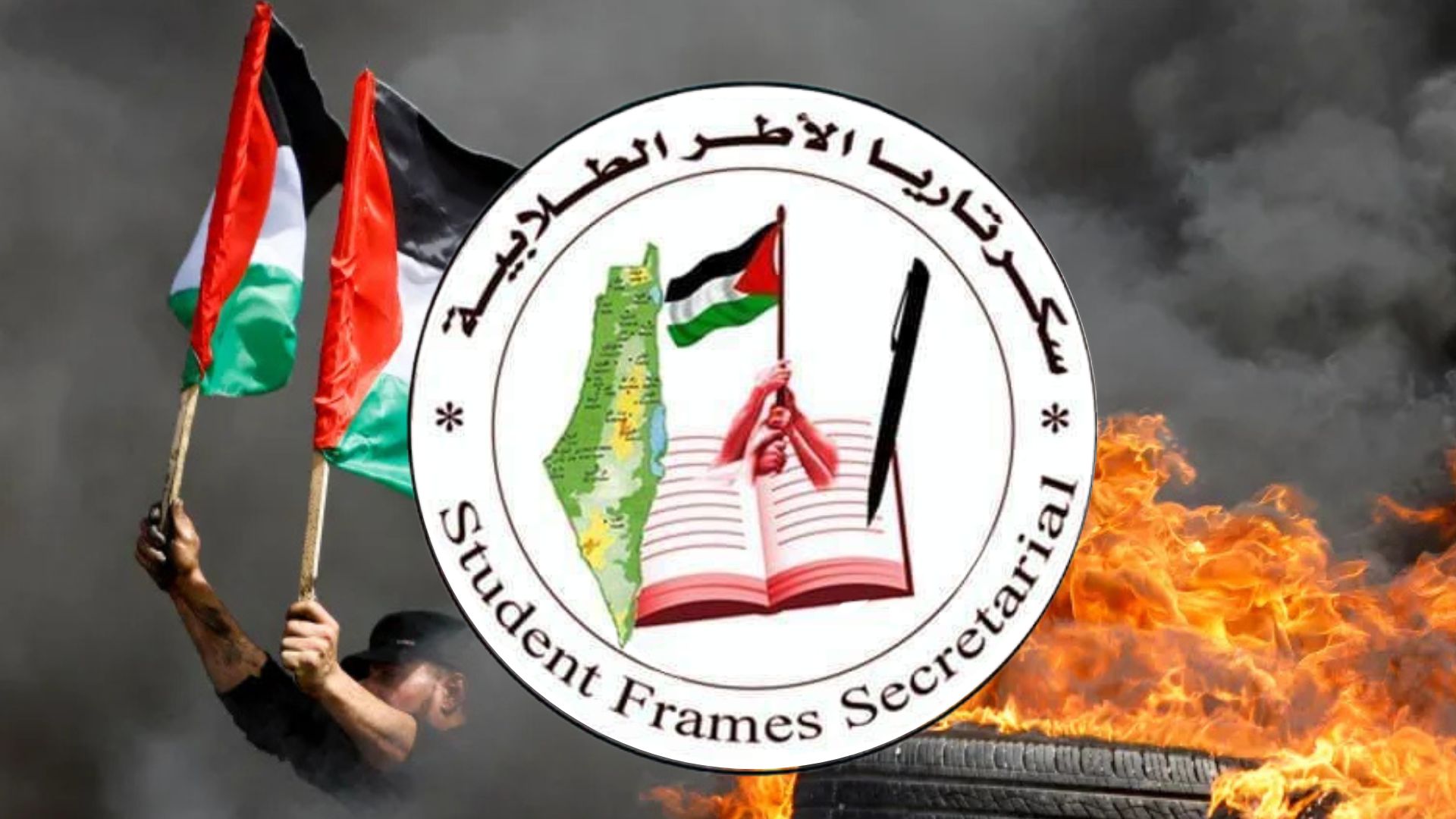
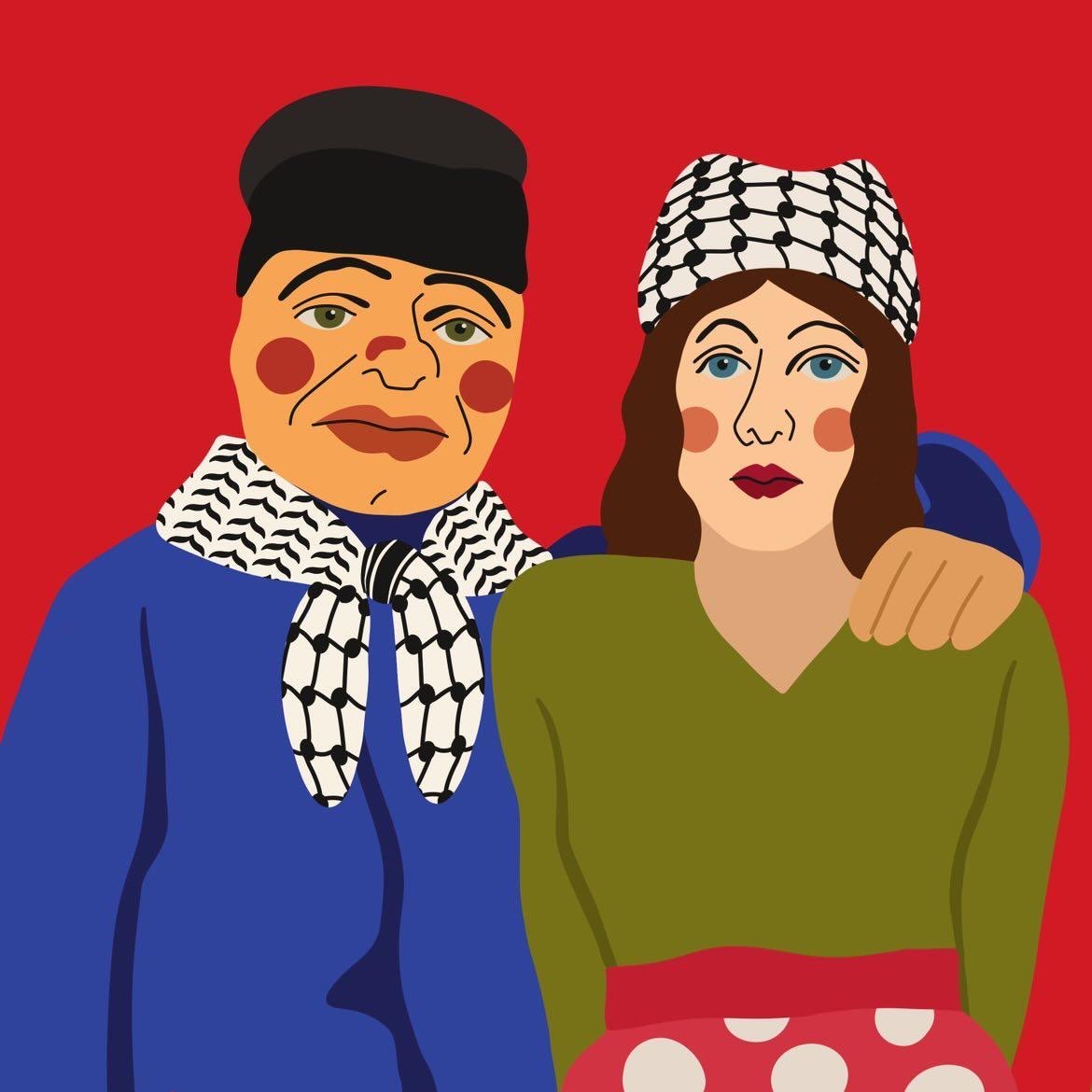

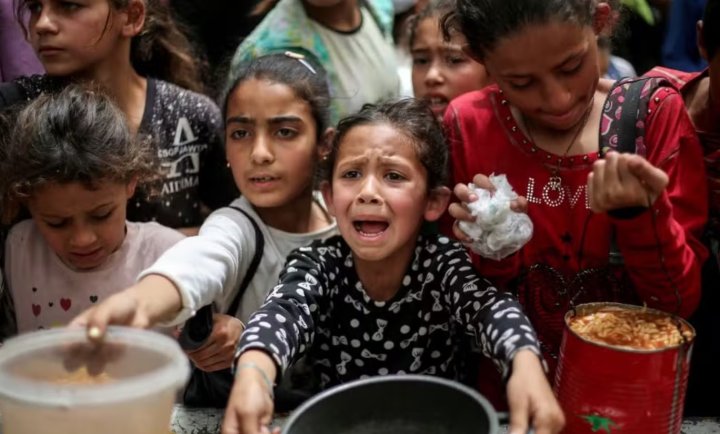
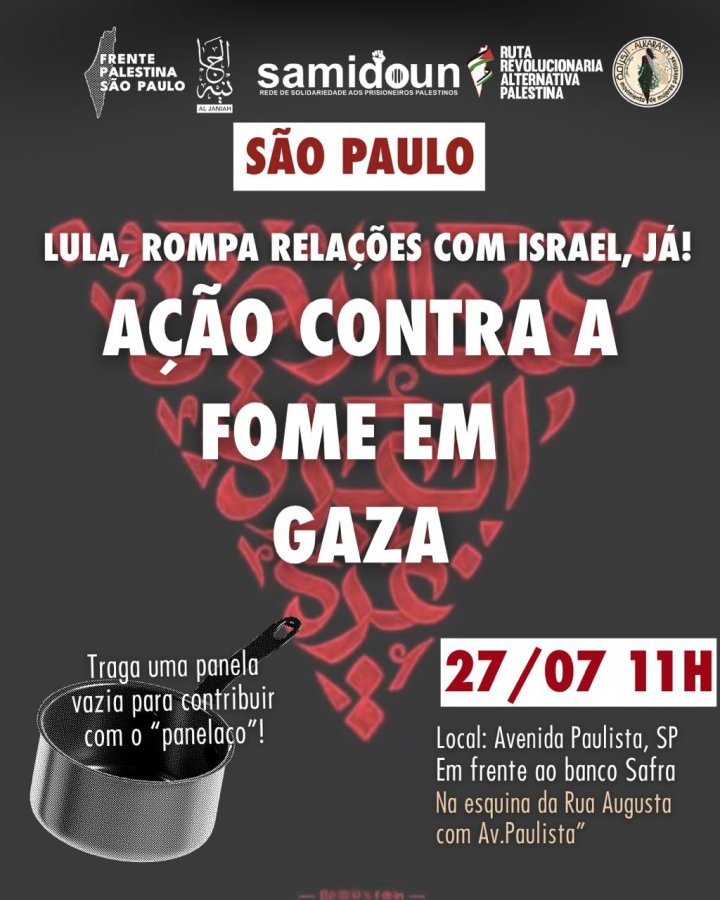
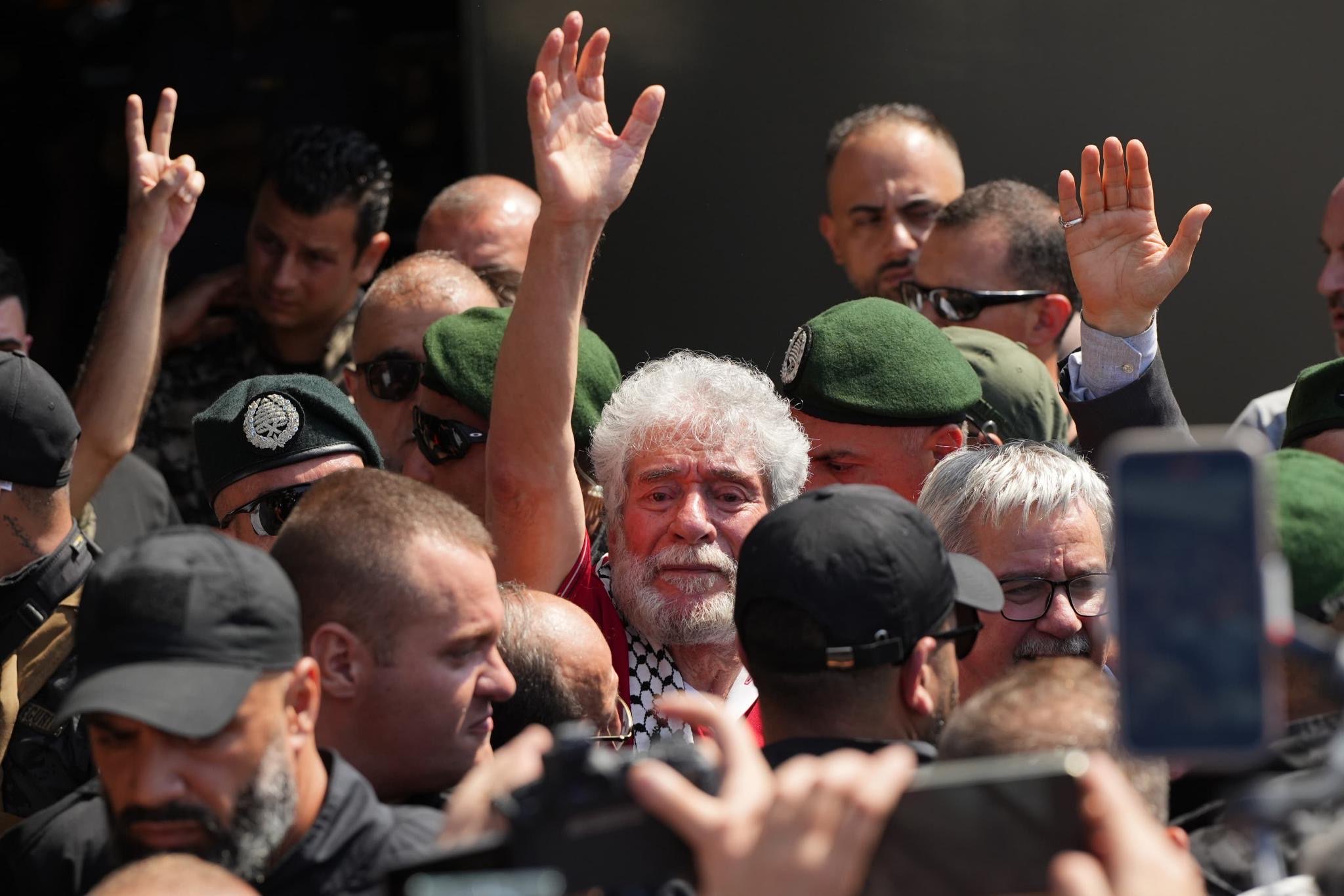
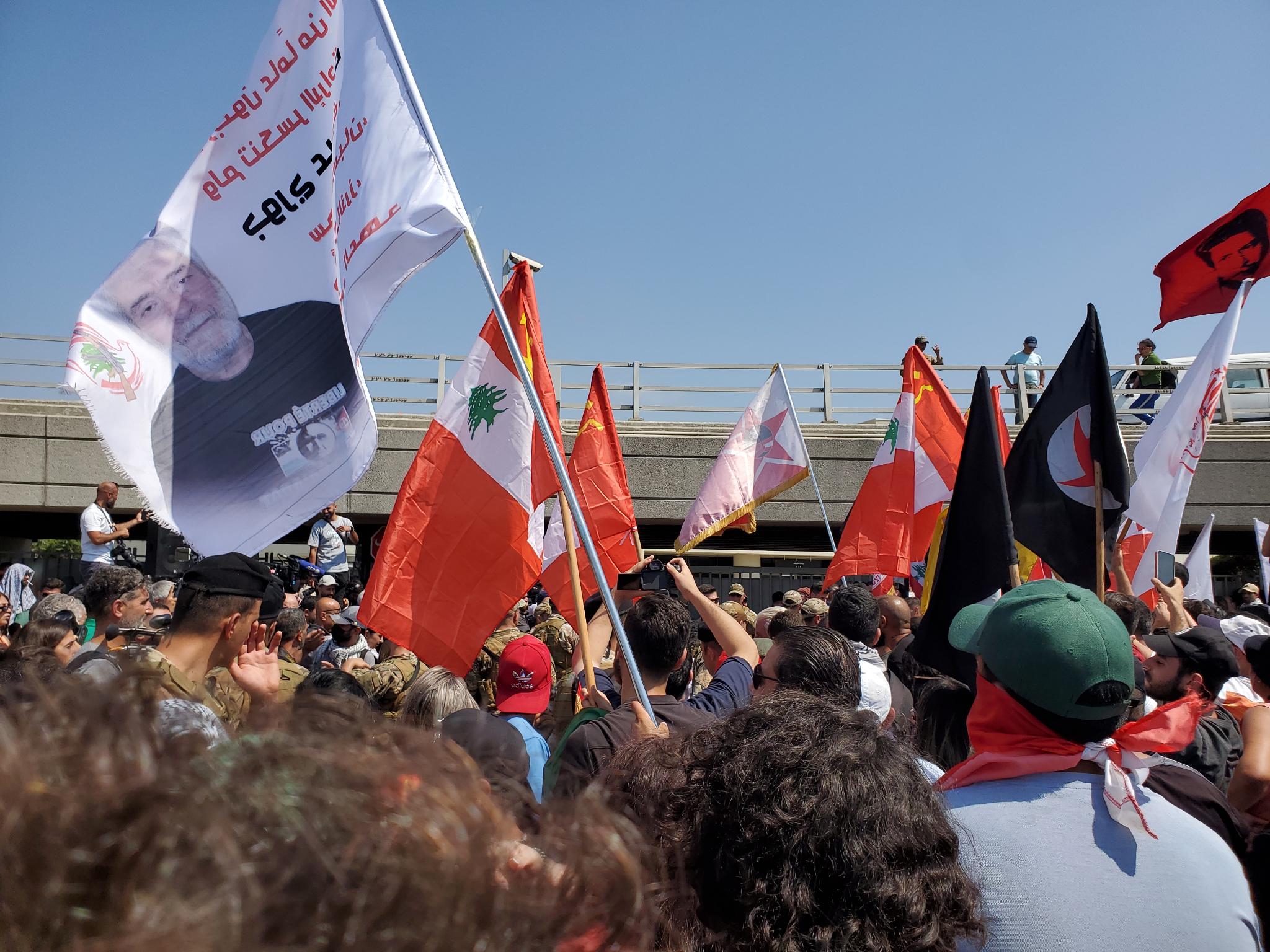
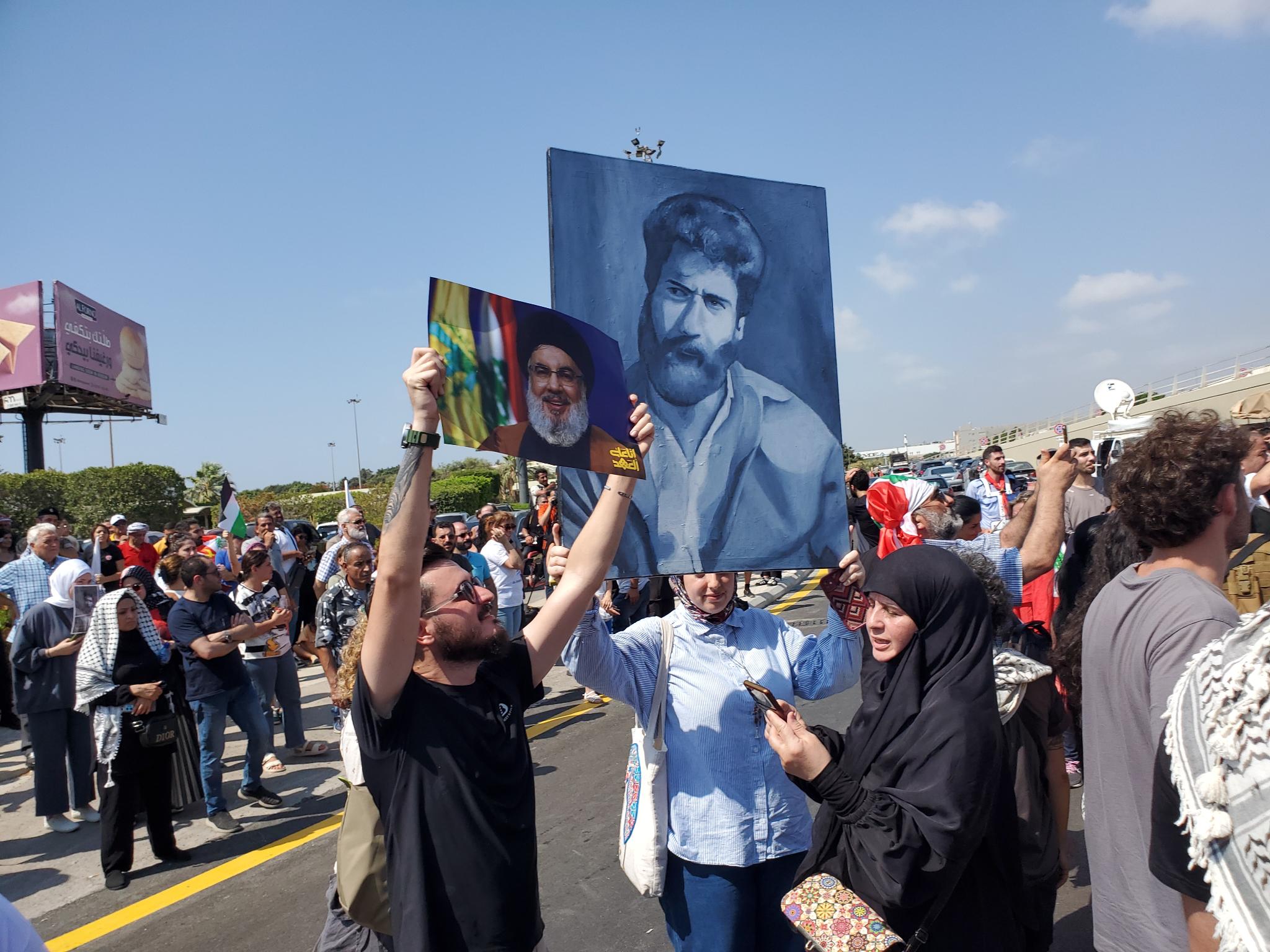 At the same time, hundreds waiting immediately outside the airport doors cheered at the news that his flight had landed, at the same time as many more hundreds gathered along the old Airport Road, particularly in al-Dahiyeh, the southern suburbs of Beirut. He soon emerged to greet the demonstrators, emphasizing that it was not merely a legal process, but struggle and solidarity in France and resistance in Lebanon, Palestine and throughout the region that won his liberation: “The condition of freedom is rallying around the resistance! The condition of freedom is rallying around Gaza! The condition of freedom is rallying around the martyrs of the resistance!”
At the same time, hundreds waiting immediately outside the airport doors cheered at the news that his flight had landed, at the same time as many more hundreds gathered along the old Airport Road, particularly in al-Dahiyeh, the southern suburbs of Beirut. He soon emerged to greet the demonstrators, emphasizing that it was not merely a legal process, but struggle and solidarity in France and resistance in Lebanon, Palestine and throughout the region that won his liberation: “The condition of freedom is rallying around the resistance! The condition of freedom is rallying around Gaza! The condition of freedom is rallying around the martyrs of the resistance!”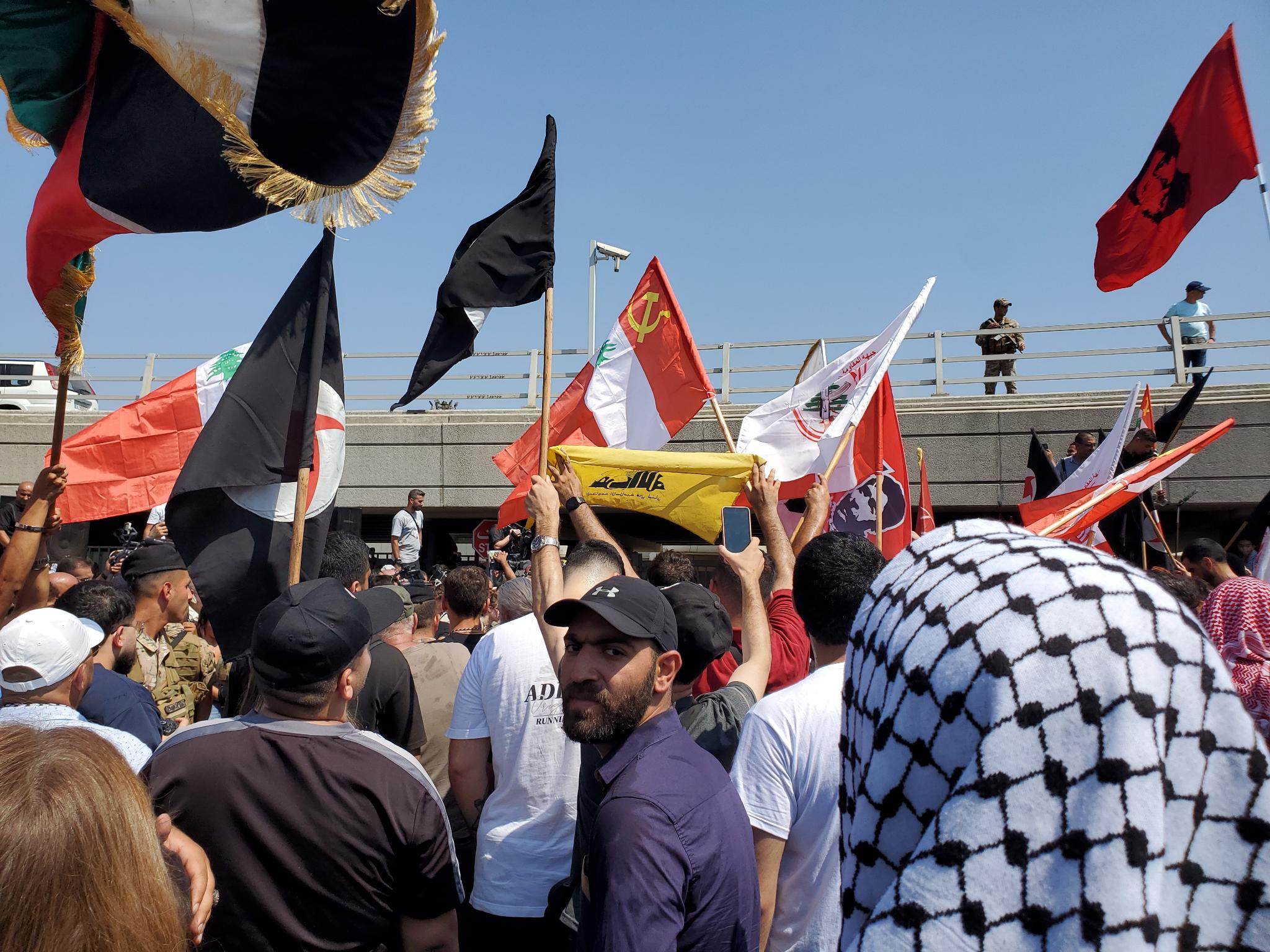
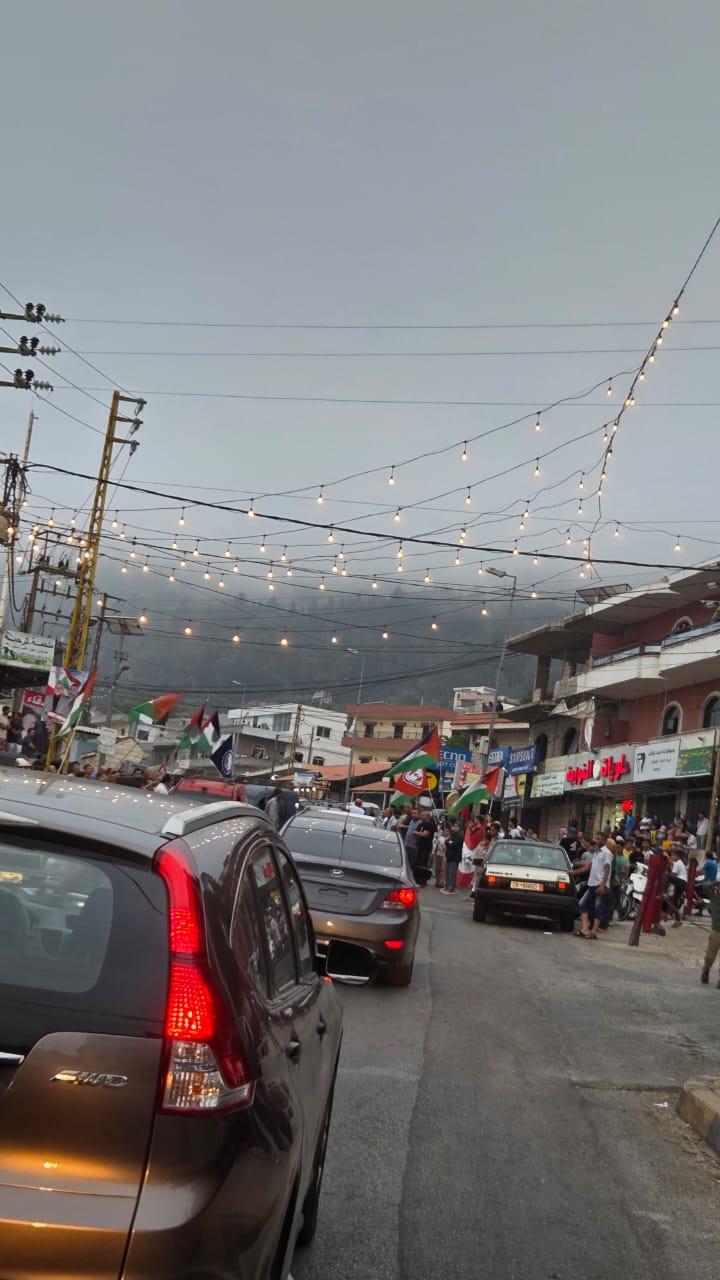
 As Georges was welcomed home, the Zionist regime continued its campaign of assassinations and aggression against Lebanon, as it killed the martyr Ali Quwsan Sadiq with a drone strike targeting him the southern Lebanese village of Barachit. These ongoing assassinations and attacks continue on a daily basis at the same time that the imperialist powers demand the disarmament of the Resistance. It also comes as reports surface that an unclear number of Lebanese prisoners, particularly fighters in Hezbollah, are being imprisoned in torturous conditions in an underground Zionist prison alongside Palestinian resistance fighters, and at least one of these Lebanese resistance strugglers was martyred inside the prisons under torture with his body remaining imprisoned, alongside the bodies of the Palestinian martyrs.
As Georges was welcomed home, the Zionist regime continued its campaign of assassinations and aggression against Lebanon, as it killed the martyr Ali Quwsan Sadiq with a drone strike targeting him the southern Lebanese village of Barachit. These ongoing assassinations and attacks continue on a daily basis at the same time that the imperialist powers demand the disarmament of the Resistance. It also comes as reports surface that an unclear number of Lebanese prisoners, particularly fighters in Hezbollah, are being imprisoned in torturous conditions in an underground Zionist prison alongside Palestinian resistance fighters, and at least one of these Lebanese resistance strugglers was martyred inside the prisons under torture with his body remaining imprisoned, alongside the bodies of the Palestinian martyrs.
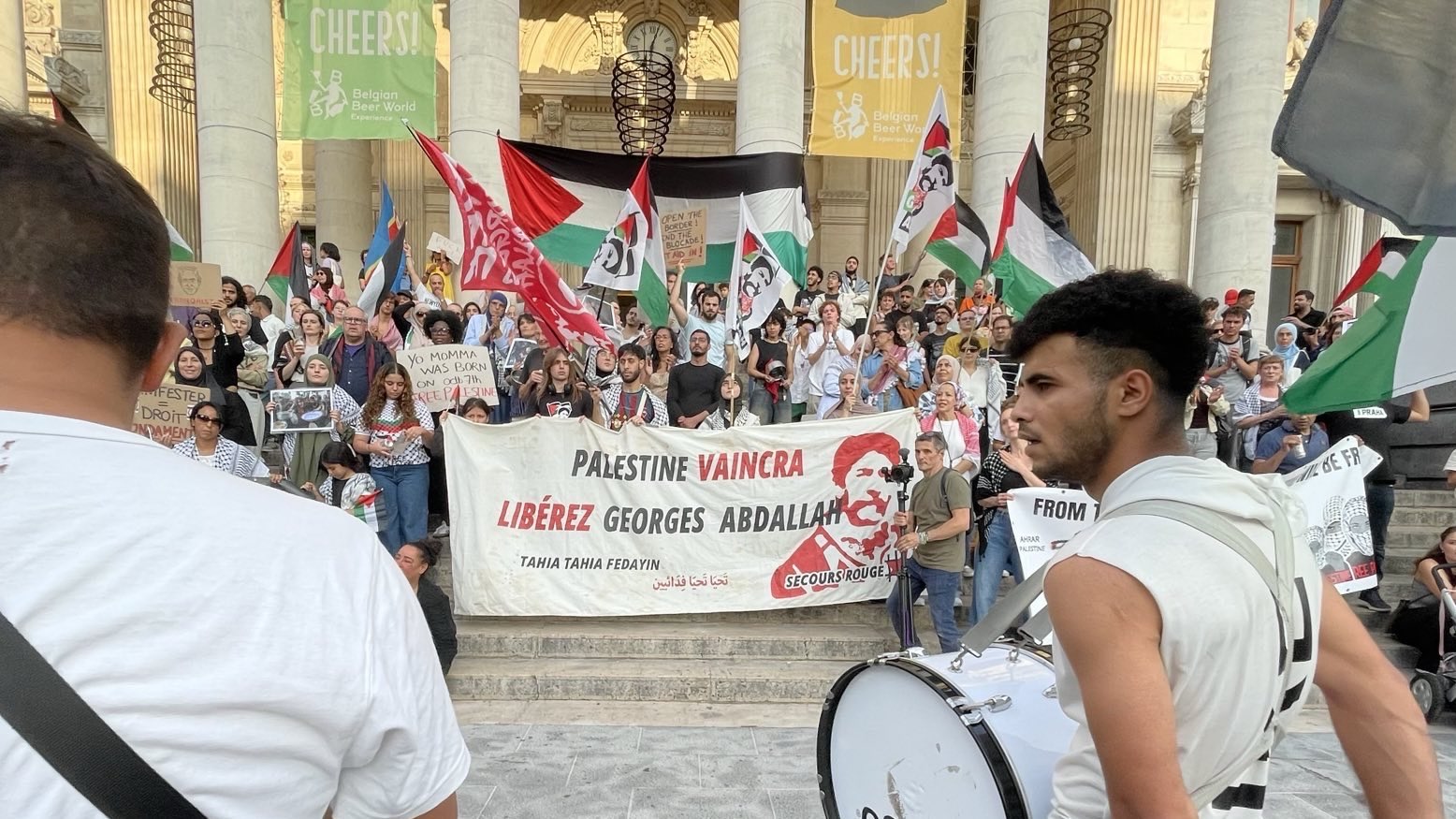
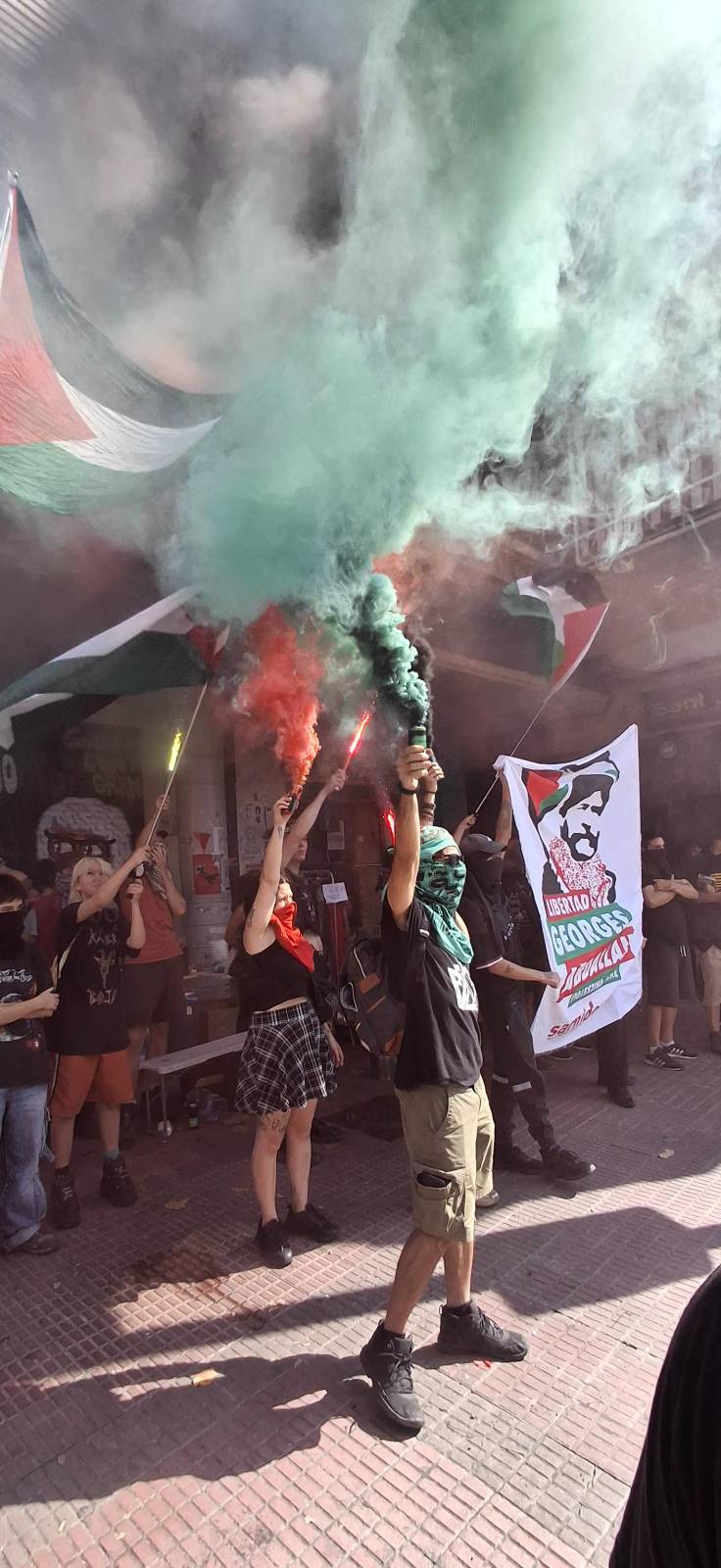
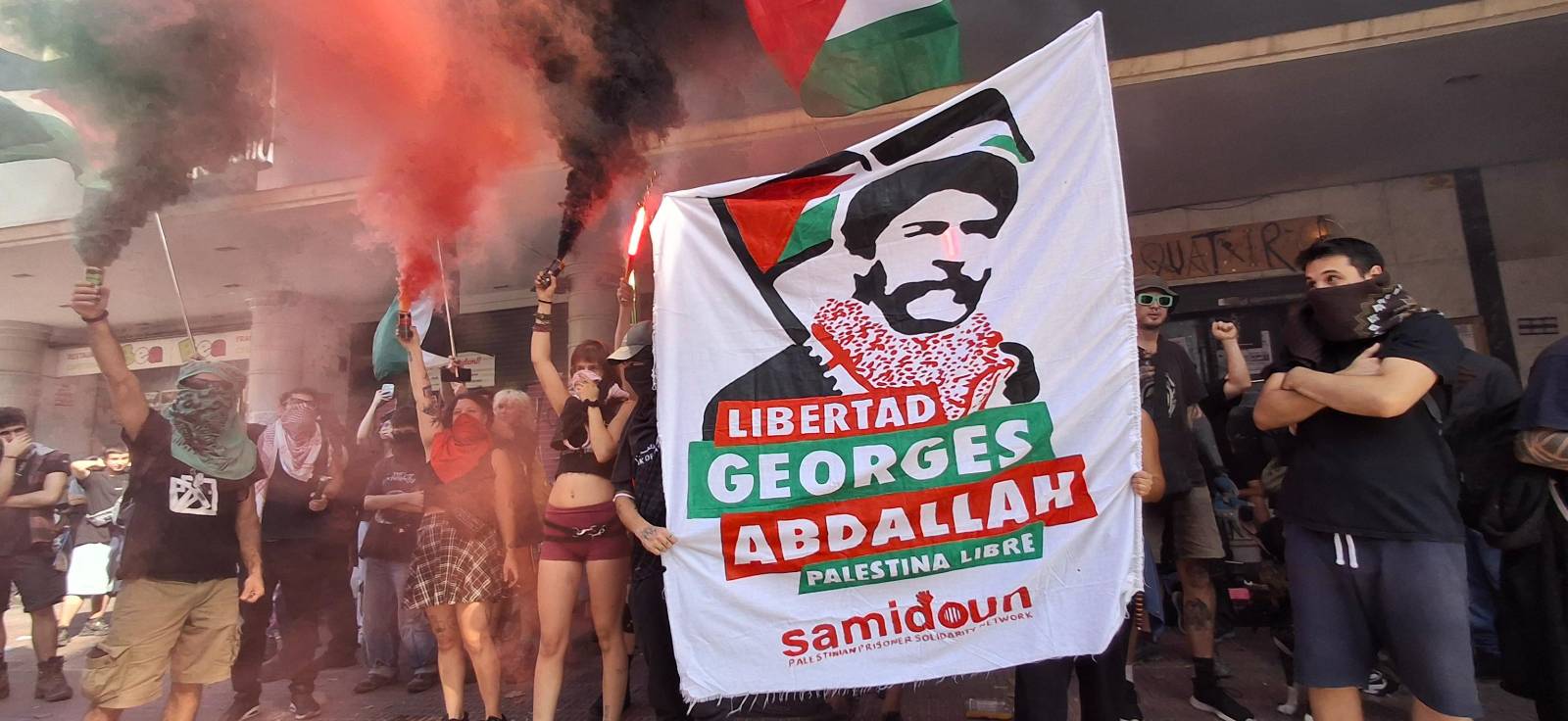
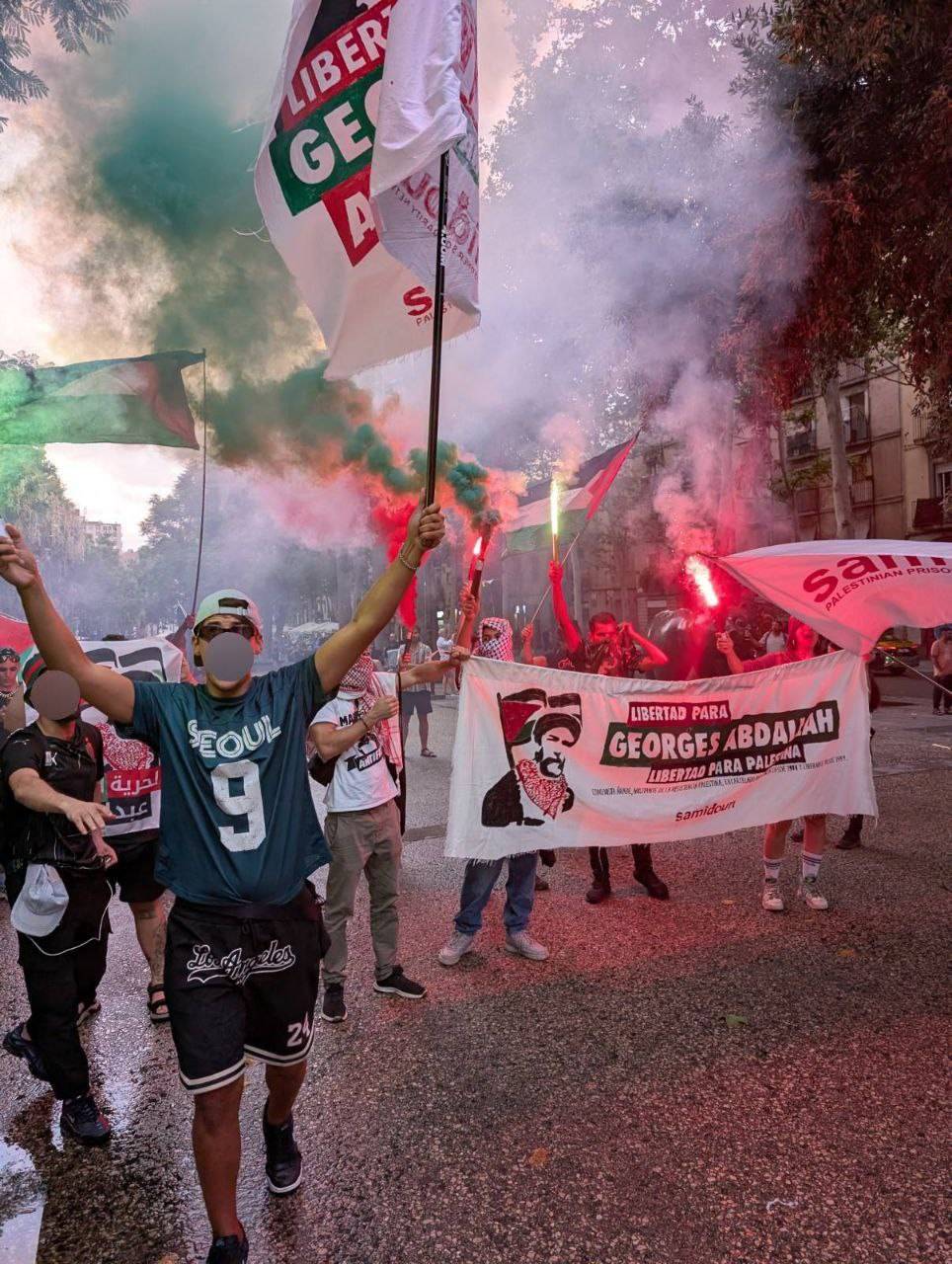
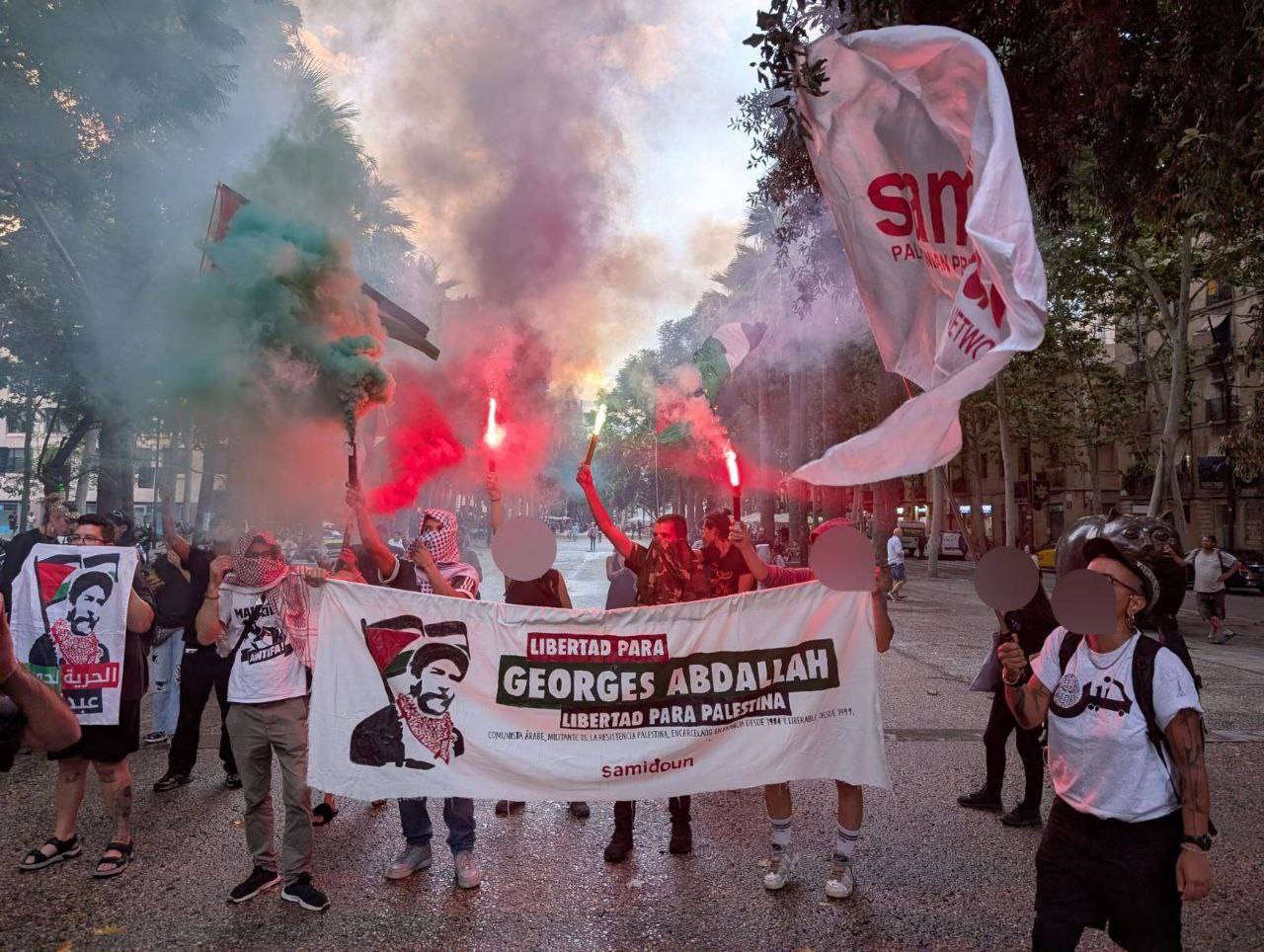 In Amsterdam, activists spoke and displayed photos of the prisoners in Zionist jails while marking the liberation of Georges Abdallah.
In Amsterdam, activists spoke and displayed photos of the prisoners in Zionist jails while marking the liberation of Georges Abdallah.